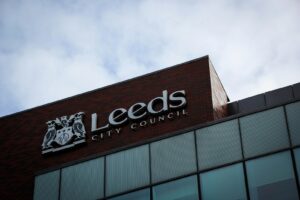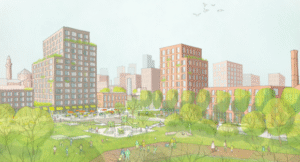A consultation launched by Environment Secretary Steve Reed outlines more than 10% of England farmland will be reduced as part of efforts to improve the eco-system.
The Land Use Framework consultation was launched on Friday 31st January, despite the full document being earmarked for publication in 2023.
First suggested by the 2021 Dimbley Review on a National Food Strategy, the framework is designed to balance the need to build infrastructure and meet nature and carbon targets.
Currently, it is estimated that 70% of England’s land is used for farming, though government analysis found 1.6 million hectares needs to be repurposed to meet its legal environmental and climate targets by 2050.
The changes include:
- 1% making small changes such as planting herbs or other plants along field margins
- 4% incorporating more trees alongside food production
- 5% repurposed mostly for environmental benefits, while still producing food
- 9% removed from food production to make way for woodlands and other natural habitats.
To help make these alterations, grassland – used to rear livestock – faces the largest reduction under government plans. This means people will be encouraged to eat less meat.
On the subject of food production, Reed also remarked farmland that was currently flooded most years should not be used for growing food and could potentially be put to better use if it was restored for nature.
‘Into the future it is probably not a good idea to keep growing crops in field like that, because your investment will get destroyed,’ Reed said. ‘But what a great location, perhaps, to plant more vegetation, more trees, to help reduce flooding in a nearby urban area.’
Arguably, there is no better time to make these changes as the latest figures from the Department for Environment, Food and Rural Affairs (Defra), show the UK is 62% self-sufficient for food, down from a high of 78% in 1984.
Welcoming the news, Brendan Costelloe, policy director at the Soil Association, said the consultation ‘marks significant progress’.
‘We welcome [the] launch of the consultation on a strategic approach to managing land use in England, which is long overdue and marks significant progress,’ Brendan said. ‘Just as we take a strategic approach to delivering the homes, offices and shops we need as a society, we need a strategic approach to delivering the types of nature and climate friendly farming and the habitats that we need to avert the nature and climate crises and ensure food resilience.
‘We have been calling for a land use framework for years to give the clarity and confidence that nature-friendly farmers, land-users and progressive businesses so desperately need to invest in the future of our countryside.’
‘We’re pleased with the intent to protect good quality agricultural land, but it’s the way that land is farmed that will determine whether the Government can avoid unnecessary trade-offs between food, nature and climate. It was good to hear the Secretary of State talk about restoring our soils, reducing pesticide and fertiliser use and creating landscapes that deliver multifunctional synergies. The land-use framework will need to turn this aspiration into reality,’ he continued.
‘The biggest challenge will be getting the balance right between flexibility for farmers and certainty for the environment and food resilience. Clearly, the framework shouldn’t be telling farmers what to grow and where to grow it, all the time. But nor can we continue to allow blatantly harmful practices to push the environment to the brink in particular areas. We shouldn’t allow harmful intensive poultry or maize production in sensitive catchments, any more than we would allow harmful housing.’
Going forward, ministers have created maps of England showing where there is the most potential for different types of nature restoration and where is best to farm. However, it should be noted that the government can’t control how farmers decide to use their spaces.
In related news:
Nationwide data shows house price growth remains slow but steady

















Leave a Reply